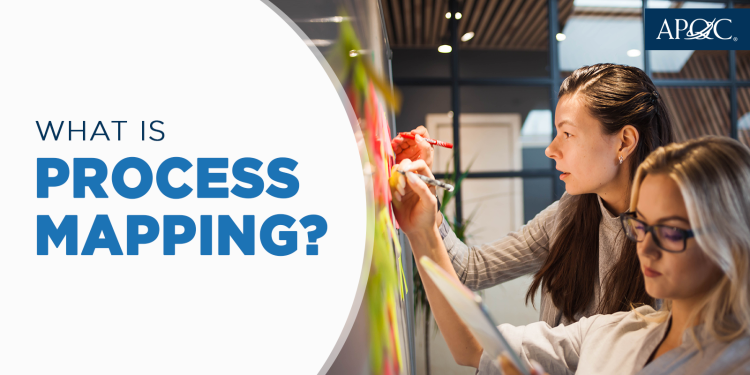
Process mapping is one of the ways organizations can document and understand their processes.
Often, projects lack clear scope and poor understanding of work processes. Process mapping can help create an upfront understanding, allowing organizations to realize some of the issues and assist in re-designing the process for a desired future state.
What are process maps?
Simply put, process maps are visual documents that describe the ‘as-is’ process, step-by-step, and are often used for:
- Documentation—create a visual guide on how to conduct a process.
- Process optimization—a visual representation of a process uncovers missing steps, redundancies, unnecessary loops, and complexity.
- Monitoring—provide a frame for managing the flow of the process and its performance.
What’s the difference between process maps, models, and frameworks?
When it comes to documenting and understanding processes, there are three core tools organizations use: frameworks, maps, and models. However, there is often little clarity around the differences between these three tools and they can often be used interchangeably.
This article defines and explores the best fit applications for process frameworks, maps, and models.
How do organizations create process maps?
Process mapping can help outline what should happen and then see what assumptions, misinterpretations, exceptions, and variance are leading to an undesired outcome. This analysis helps organizations focus on processes that need improved consistency/flexibility or lower cost-of-management.
APQC suggests organizations follow these five steps when mapping processes:
- Determine the process scope. With specific processes in mind, an organization can determine their scope. This involves identifying and discussing the relative environment that could affect the process, the key stakeholders and their needs, and the boundaries and constraints of the process.
- Document the process. Documenting a process begins by collecting information. This can involve interviews, a workshop approach, automated process mining, and/or a focused project. The output is the information that will be mapped.
- Lay out the process outputs and inputs. At the outset of process mapping, the organization should understand the suppliers of data, inputs needed, processing of inputs, output requirements, and customer of the output— commonly called a SIPOC. The focus is on capturing the set of inputs and outputs rather than the individual steps in the process.
- Analyze the process. With the SIPOC in hand, an organization is ready to analyze the process. A variety of techniques can be used to develop a detailed understanding of process needs, constraints, and performance drivers. APQC recommends using a RACI chart to identify the roles and responsibilities within the process and ensure that all players understand how they work together.
- Lay out the process map. A well-prepared process map addresses three critical questions: Why are we mapping; who we are mapping for; and what are the start and end points of the process. Regardless of whether an organization uses paper and pen or an off-the-shelf mapping product, APQC advises starting with the simplest features of a process. The inclusion of details such as roles and decision models can be integrated once the most basic path of an end-to-end process has been mapped.
What about APQC’s Process Classification Framework (PCF)®?
APQC’s PCF is a framework, not a process map. Process frameworks are essentially lists of all the key processes performed in an organization. One of the biggest benefits of the PCF is that it provides an external, neutral, and methodologically agnostic way of establishing a common language around processes. It’s important, however, to note that the PCF is not intended to be used in sequential order.
The PCF’s hierarchical decomposition describes the work an organization does in terms of process groups, processes, and activities. Using the PCF allows organizations to brainstorm and begin to conceptualize the complex network of activities they’re trying to understand, manage, and improve.
Your organization can decide which elements of the PCF to use to create your map(s). High-level maps (top-down flow charts, relationship maps, and end-to-end maps) that are used for executives and leadership usually are built at levels one and/or two. Process flows (what most professionals call a process map) don’t usually begin until level three and four of the PCF.
What about end-to-end process mapping?
An end-to-end understanding of work processes is critical for almost any aspect of managing business operations. In mapping out processes, organizations need to both understand where processes begin and end and how processes align and interact. Learn more in our content collections, Applying End-to-End Processes and End-to-End Process Maps and Measures.